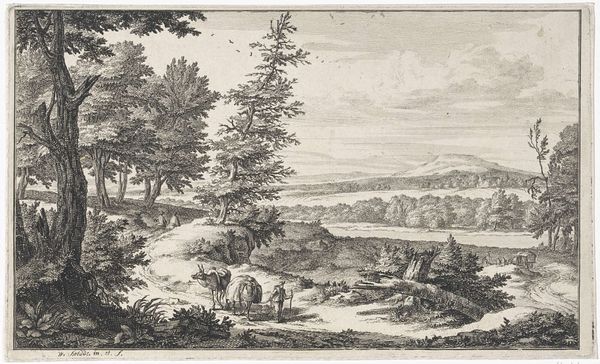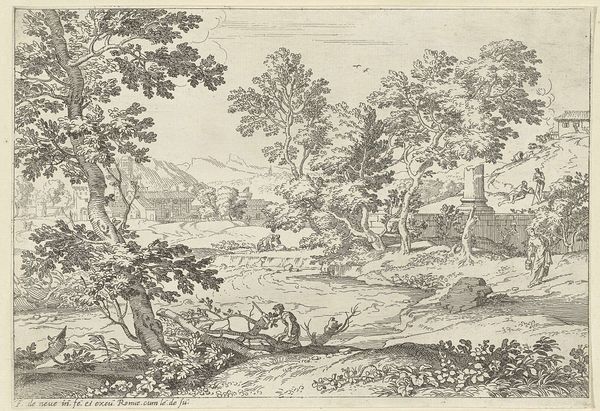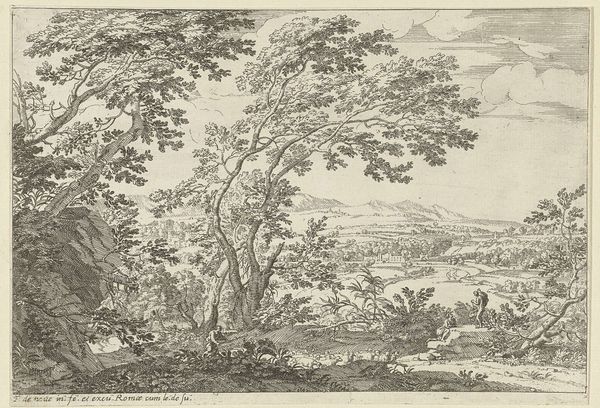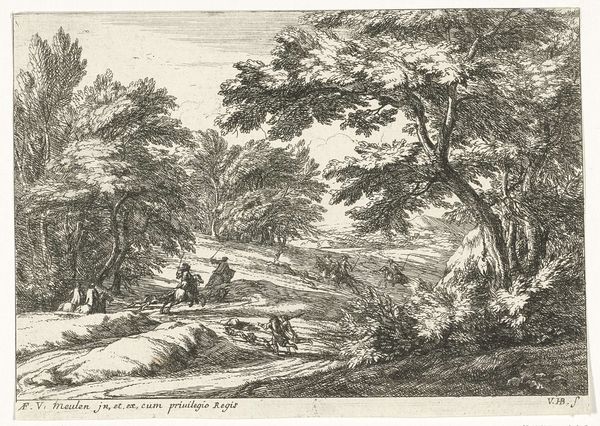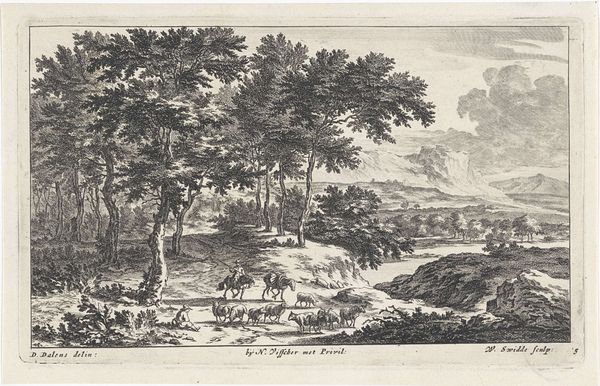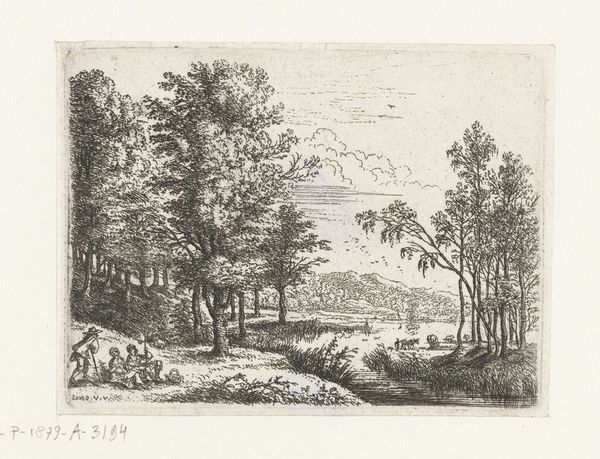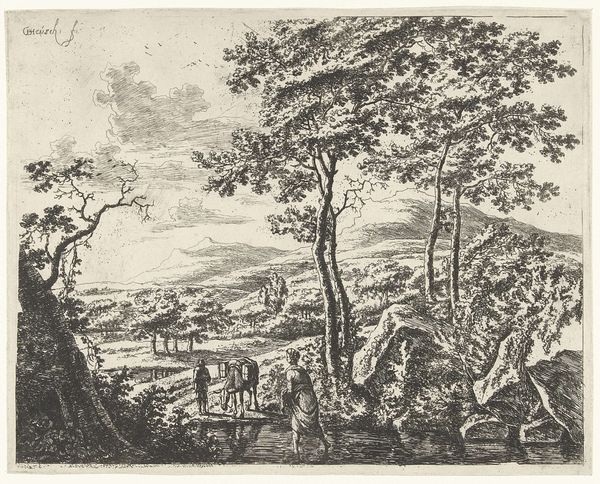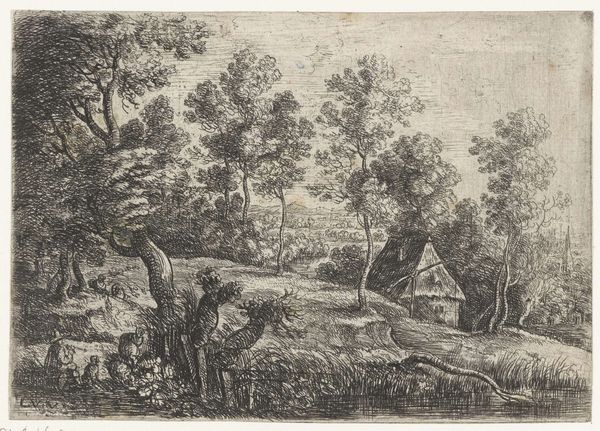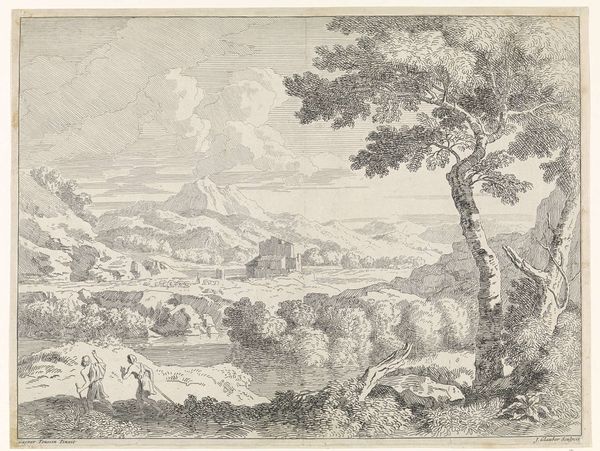
drawing, etching, ink, engraving
#
drawing
#
dutch-golden-age
#
etching
#
landscape
#
ink
#
engraving
#
realism
Dimensions: height 142 mm, width 235 mm
Copyright: Rijks Museum: Open Domain
Willem Swidde created this landscape with horse-drawn carriage using etching around 1681-1697 in the Netherlands. It depicts a scene that seems calm at first glance, but reflects the complex social dynamics of the Dutch Golden Age. The landscape isn't just a backdrop; it’s a stage for displaying social class and economic power. The presence of a horse-drawn carriage, a symbol of wealth, alongside hunters on horseback, points to the leisure activities of the elite. The detailed rendering of nature and the inclusion of such figures are visual codes reflecting the cultural values of the time, where land ownership and social status were closely linked. To understand this image fully, we can look into the economic structures of the 17th-century Netherlands and the social hierarchies that shaped artistic patronage and production. These factors reveal much about the cultural values embedded in seemingly simple landscapes like this one.
Comments
No comments
Be the first to comment and join the conversation on the ultimate creative platform.
